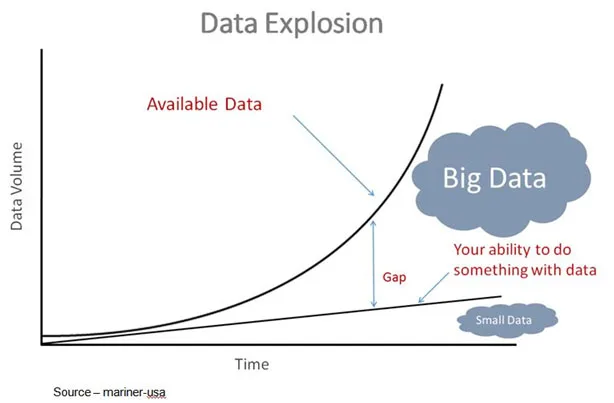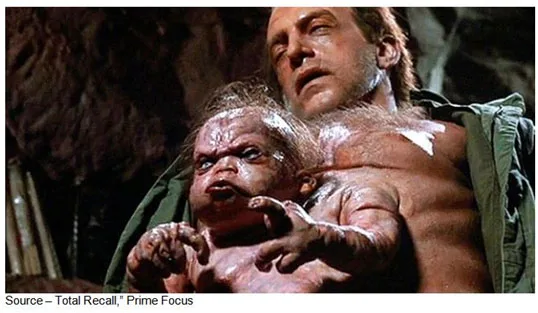Data Diddling – Customers Should Always Come Before Big Data

I admit it. I’m really bad at things like balancing a checkbook. In fact, all things mathematical.
Bad? Pathetic is a more accurate description.
I had to take something called mathematics of life insurance my last quarter of college to fulfill my basic course requirements. It was the least mathematical math they offered.
Barely made it but it also somewhat explains why the idea of studying big data and the data of data (meta data) sounds so unfun.
I admire/respect scientists and engineers but doubt if I could reimage myself as a data scientist just because they are in such short supply in marketing activities
The meaning of the title – data scientist – is so vague and you don’t need to know tough stuff like machine design, machine language, and programming.
All you need to do is talk the talk and buy Salesforce’s products/services.
That’s probably why the marketing crowd at Dreamforce in San Francisco in mid-September will be overflowing.
After all, big data and data analytics are becoming critical tools to marketing.
Somewhere, buried in all of that data firms are gathering from every source possible is the next big idea just waiting to see the light of day.
The one thing that keeps every marketing person up at night is trying to figure out how they can get insight info and an in-depth understanding of today’s on-the-go consumer.
To do it, they’re already collecting huge amounts of consumer data from inside and outside the organization, including the minute-by-minute use of their devices, social media sites and data brokers.
Thanks to today’s devices, users are very willing to tell others what, where, why and how they’re doing whatever they’re doing. For a little special treatment and/or added convenience, they’ll pass out even more valuable information.
Getting the data is the easy part.

Making sense of the data – predictive and profitable sense – is the big challenge.
That’s where Salesforce’s products/services and other firms come in.
Marketers are constantly striving to understand consumers, so we grab as much data as we can. They’ll do almost anything short of talking to the customers.
Last year, Accenture found that big data was ultra important to most business executives around the globe with 59 percent saying it was extremely important.
In fact, they’ve started trying to take over the IT (information technology) department.
You know; new software here, new services there, a couple of clouds out there and BAM! the marketing budget and corporate influence grows.
After all, 88 percent of the folks said marketing technology was going to make them more innovative and 86 percent said it would improve their customer relationships and create more loyalty.
Of course, just adding technology bits and pieces is seldom enough. Just ask any CIO (chief information officer) or CTO (chief technology officer).
The key is how fully they are integrated, managed, maintained and properly/intelligently used.
That’s probably why Accenture pointed out that the challenge would correctly understanding/using the big data firms were accumulating.
Ask Benioff’s Crew
To make sense of it all, marketers who create ads, social outreach efforts and websites sign up for Dreamforce to become data scientists. You know a combination software engineer, data analyst and statistician–people who love spending hours mining that big data that has been accumulated.
Jeff Tanner, professor of marketing at Baylor University’s Hankamer School of Business, recently noted that companies spend huge amounts of time gathering data so they end up drowning in data and have difficulty using it to solve business problems and real customer wants/needs.

Translation? Companies are adrift in an endless ocean of data and can’t see the shore.
Tanner feels it will take a few years before marketing evolves beyond simple data analysis of customer insight data and actually learns how to quantify the results.
That doesn’t mean companies do nothing until they evolve to the point of 100 percent accuracy of their information because if it’s partially right, it can/should be used and you can adjust the marketing actions/activities as new results emerge.
Not having complete data is no excuse to maintain status quo.
Companies are increasingly digging into their customer databases and tapping the stuff that Google, Facebook, Instagram, Twitter and everyone else offers (sells) to better understand their customers’ behavior and preferences as well as everyone else’s customers.
But we’ve only scratched the surface.
POS (point-of-sale) register data still isn’t widely available around the globe. B2B (business to business) firms have their own sales/shipment data but don’t really have a clue as to the overall market volumes and competitor information; despite the services of some very professional, very good market research firms.
So they have to make the best use they can of what’s referred to as little or small data.

You know, the customer information that is readily available to give you general insights that impact the bottom-line.
Despite the screams of privacy advocates, a study by SDL showed the most of the millennial generation is aware that companies are collecting information on them and as long as it benefits them, they aren’t overly concerned.
The connected generations, those who were almost born with a device in their hands, don’t seem to care one way or another.
SDL reported people weren’t concerned with the practice as long as:
- 52 percent said it was okay as long as they had a better customer experience
- 60 percent of the U.S. respondents said they would provide more personal information to firms they trust
- 46 percent were willing to provide data as long as they weren’t having irrelevant offers thrown at them
That means that until big data capture/analysis matures, companies can do something to improve and expand their customer relationships as long as they:
- Commit to the idea of becoming more fact-based with their decision processes. Understand that they are behind the changing customer habits, preferences and make decisions based on the customer, not the competition
- Are willing to learn by doing. Realize they are working through things in a trial and error process, are able to quickly admit when efforts fail and correct them
- Be creative by understanding natural customer interaction and using that information throughout the organization. You know; find out what call center folks are discussing most frequently with customers, talking with really smart customers and getting their inputs for product enhancements/future products; or in other words, get the unfiltered, watered down data
Gut feeling company and marketing decisions still count but it’s also important to balance that with data-driven information.
That’s the way new data – yes, more big data – is created.
 But big data doesn’t mean anything in your strategic and tactical efforts without the data you get from consumers.
But big data doesn’t mean anything in your strategic and tactical efforts without the data you get from consumers.
If companies have to constantly feel as though the answer is right around the corner they’ll soon find too much data can cause indigestion.
Take advantage of what’s in front of you today.
# # #
